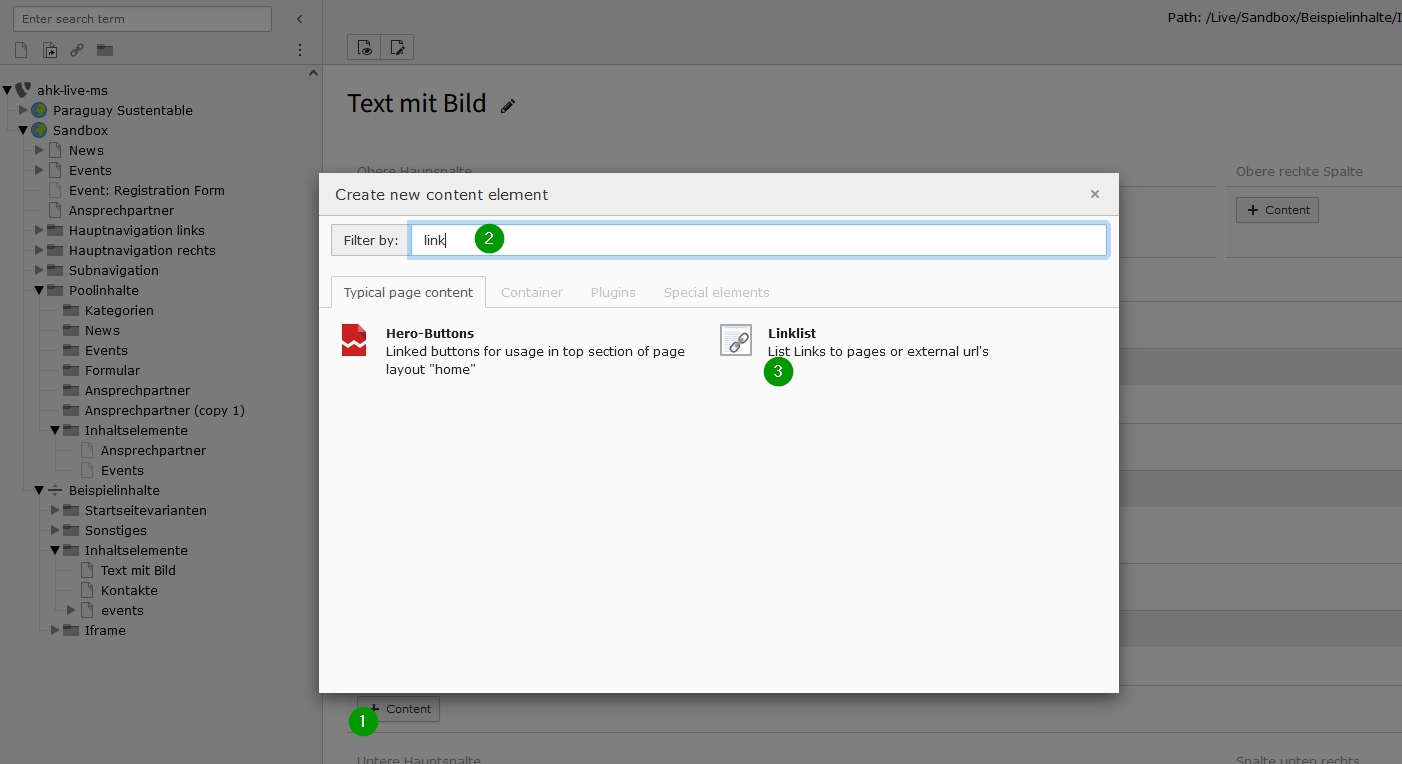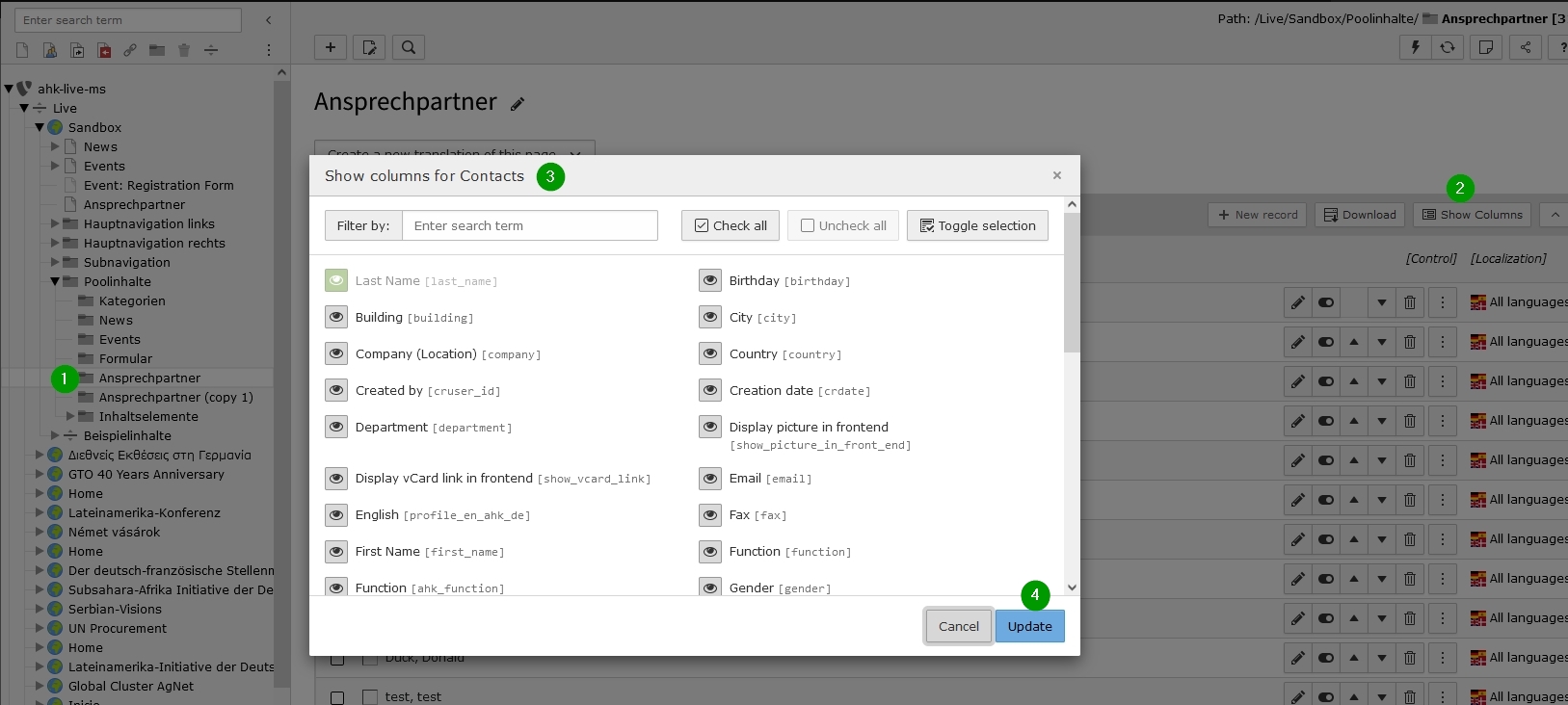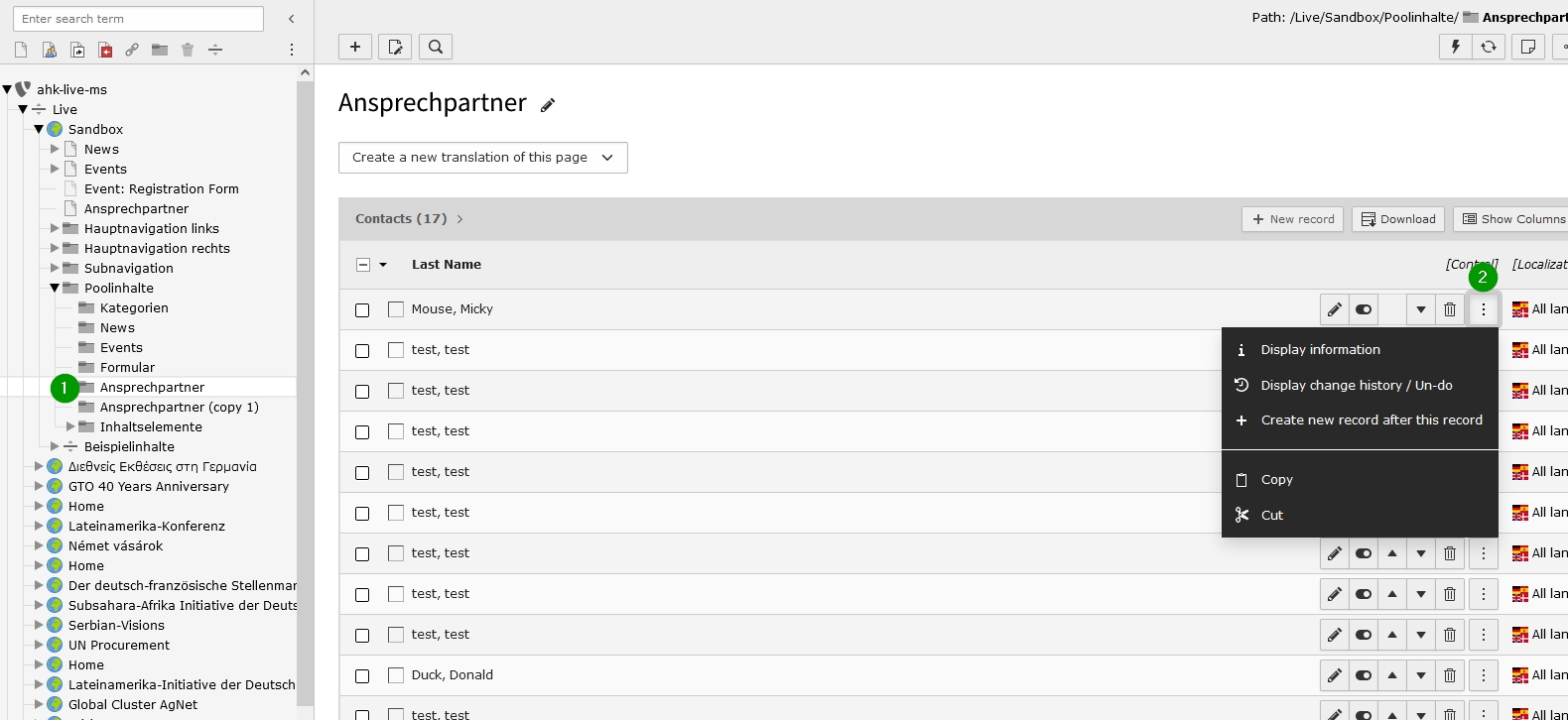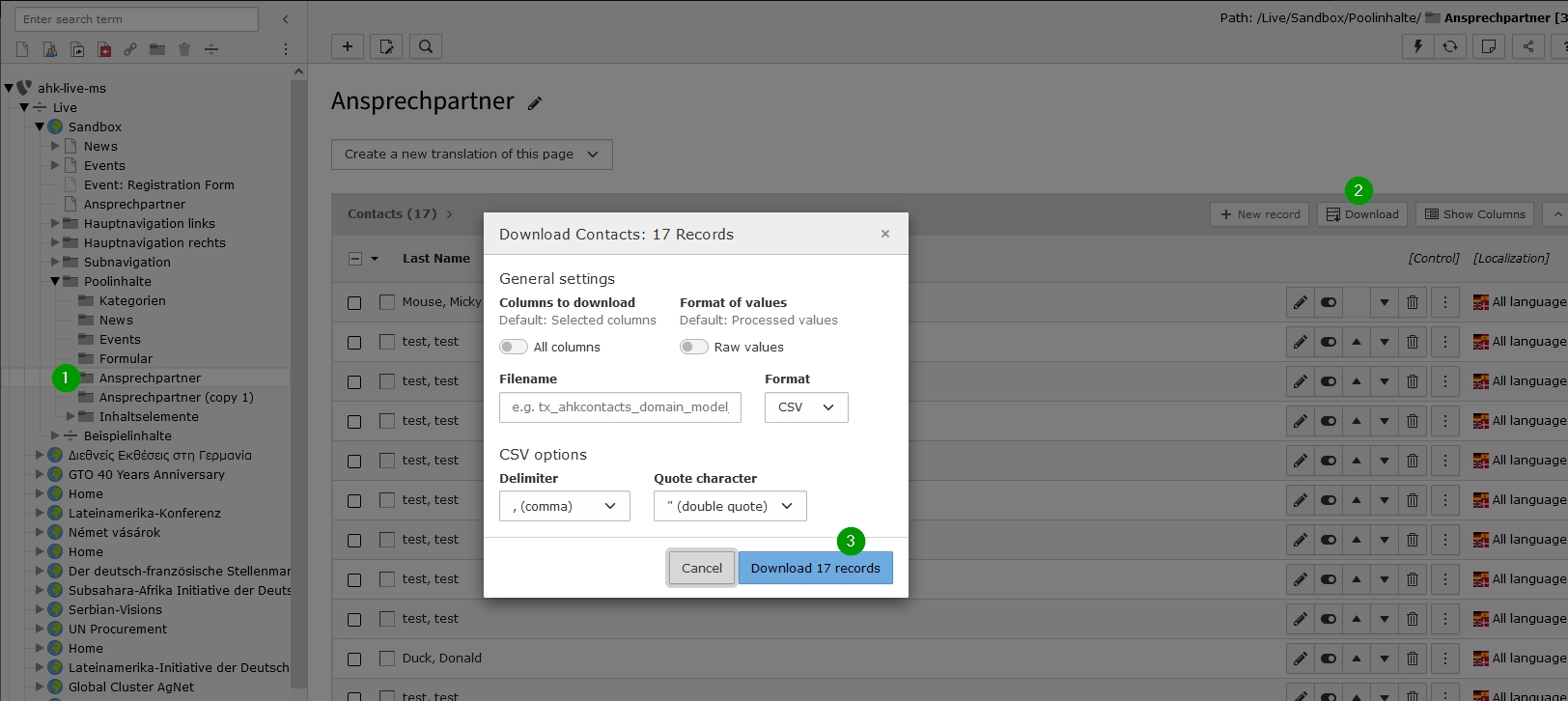Changes in the TYPO3 system after the upgrade to TYPO3 V11
Several new functions and improvements have been introduced with the update. Short explanations of the changes that specifically affect editors can be found here.
Log-In
Log-in throttling
If too many failed log-ins from the same IP address are detected, the authentication attempts are blocked. In the TYPO3 standard configuration, a maximum of 5 attempts in 15 minutes are currently allowed before access is first blocked for the respective IP.
Reset password
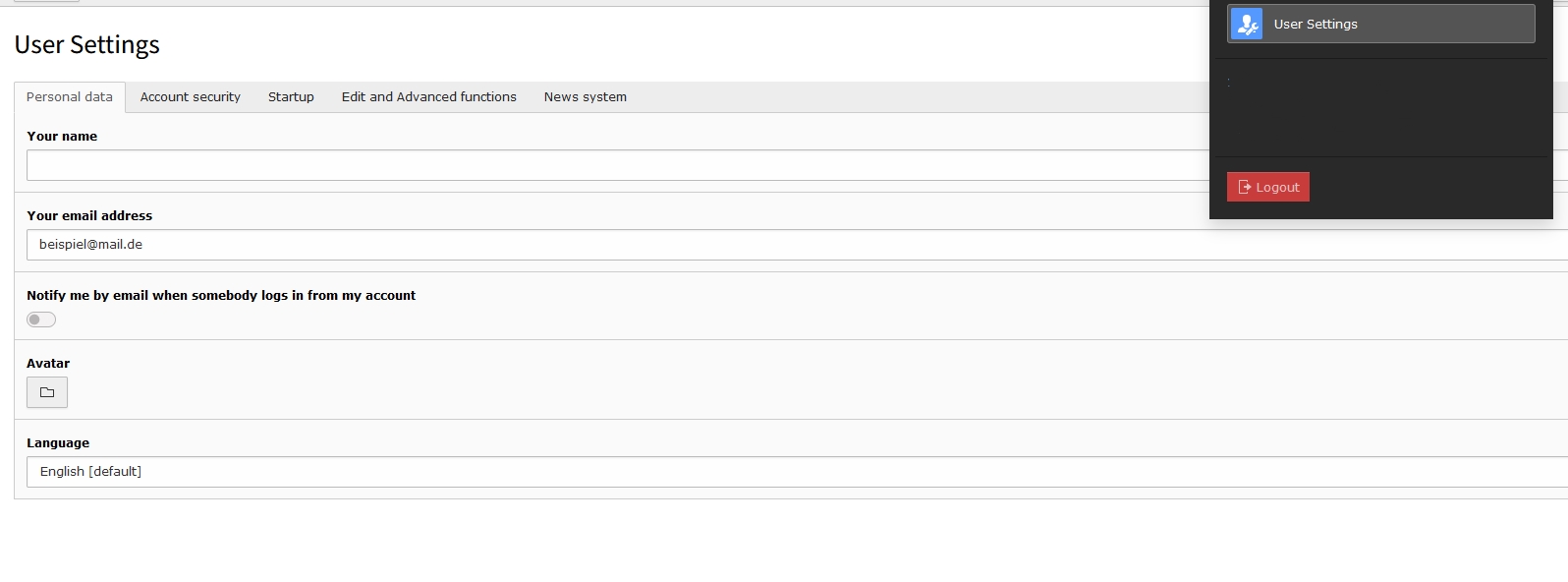
It is now also possible for you to reset your password.
In order for the reset link to be displayed, the following criteria must be met:
- The user has already logged into the TYPO3 system once.
- The user has stored a valid e-mail in his user settings.
- The user is neither deleted nor deactivated
- The e-mail address is only used for one user in the TYPO3 system.
As soon as the user has entered his e-mail address, an e-mail is sent with a link through which he can set a new password, which must consist of at least eight characters. The link is valid for 2 hours and a token is added to the link. If the password is entered correctly, it is updated for the user and they can log in.
Changes in the Page module
Language selection
In the backend module "Page" you can select which language or translation of a page and the page content you want to edit. In previous TYPO3 versions, when you selected the default language, all other languages were also displayed. This had a negative impact on clarity and speed. To simplify the work, the selected language now only shows the content elements of just that language. With the newly introduced option "All languages" you can still access all content elements of all languages if required.
Changes in the List module
Selectable columns in record tables
The updated user interface makes it easier to add and remove columns.
The list module allows backend users to work with different database entries. Users can now simply select the columns to be displayed in the list.
Editing steps:
- Navigate to the folder where the records you want to edit are located.
- Click on "Show Colums" at the top right of the table.
- Select the information to be displayed. To do this, click on the icon in front of the information, which will then turn green.
- Click on Update and the new column is added to the table.
Extended view of records
The list module has an extended view with which you can access further functions, e.g. the display of additional details or the display of the change history of content elements.
Previously, the extended view was activated via a checkbox below the tables, which then applied the view to all tables on the page.
Editing steps:
- Navigate to the folder containing the records you want to edit.
- Click on the three dots next to the record and select the desired action.
Download database tables
The download button is now displayed in the header of each table. Instead of a simple CSV download, you can now customise the export. A dialogue box allows users to configure the file name and format (CSV or JSON) and other settings.
Editing steps:
- Navigate to the folder containing the records you want to edit.
- Click on "View Download" in the upper right corner above the table.
- Make the desired settings and then click on Download.
Links
Page tree view for links
When you create a link, you can now apply a filter to the page tree displayed there and hide tree components. Content elements are now much easier to find and select. They appear clearly listed in the content area. You can now navigate within the page tree using the keyboard.
Editing steps:
- Click, as usual, on the link button in the ZK editor for a link.
- The link handler opens.
- You now have the option to filter the tree according to the page title of the desired page or to reload or collapse the page tree via the three dots.
- Click on the desired page.
- Now you can either link directly to the pages (grey button) or directly to a content element.
- Once you have selected the link, the window closes again.
Deep Linking in the Backend
You can now directly send the links that the backend created when editing the content to your colleagues or the AHK support. When this link is opened, the TYPO3 login screen appears and after successful login, the user jumps directly to the page/record you were working on.
This also means that they can now define backend pages as bookmarks in the browser and thus always work on these pages directly after logging in.
This not only works for pages, but also if they send the URL while they are in an element.
Linking phone numbers
In addition to links to pages, files, URLs and email, it has also been made much easier to link to a phone number.
Editing steps:
- Mark the desired telephone number in the ZK editor and then click on the link button.
- The link browser opens. There is now a new tab called "Telephone".
- Enter the desired telephone number in the field. Attention: A telephone number may only consist of numbers and the character "+".
Navigation area
Resizing/Toggling of the Navigation Area
Two things have changed in the navigation area, the column in which the site tree is located.
- The area can now be resized. This means that pages with long page titles and page trees with many levels are no longer cut off in terms of content.
- The button for expanding and collapsing the navigation area has been repositioned; it is now located directly next to the field for filtering the page tree.




